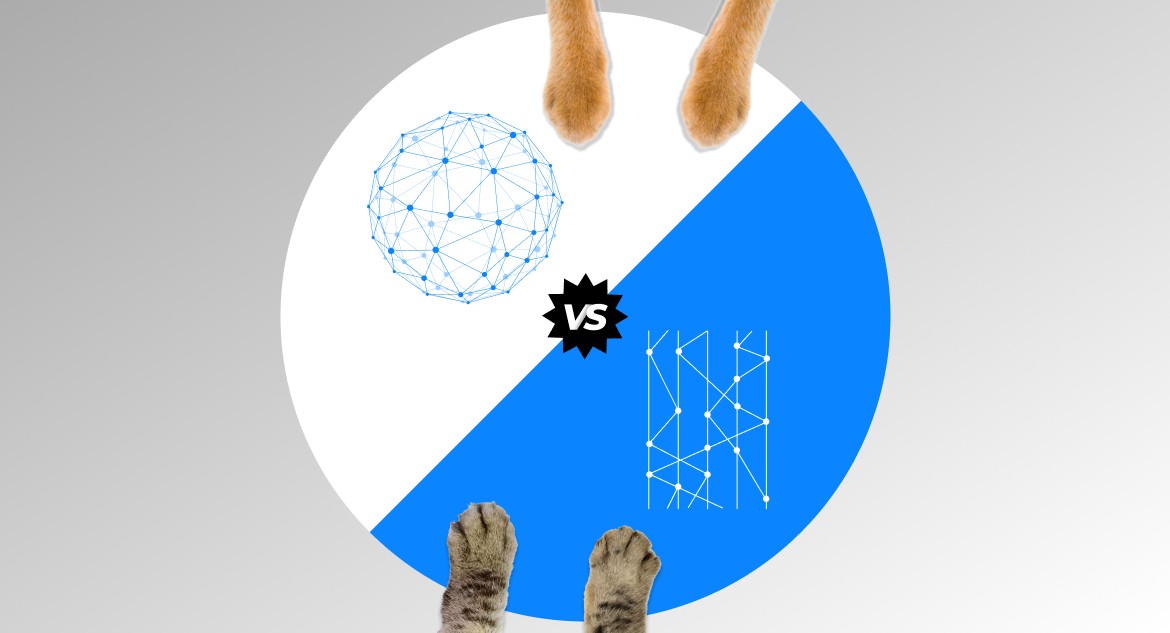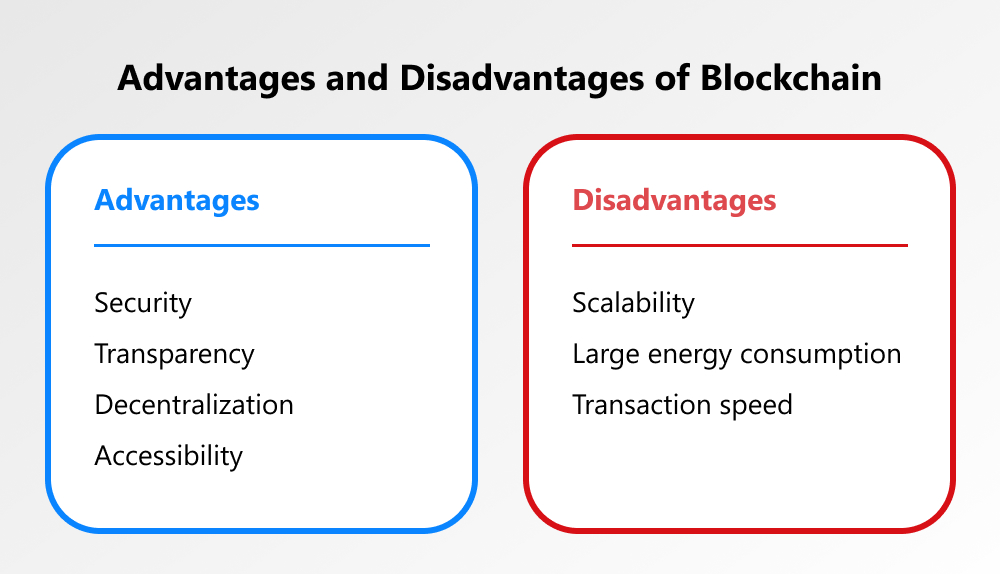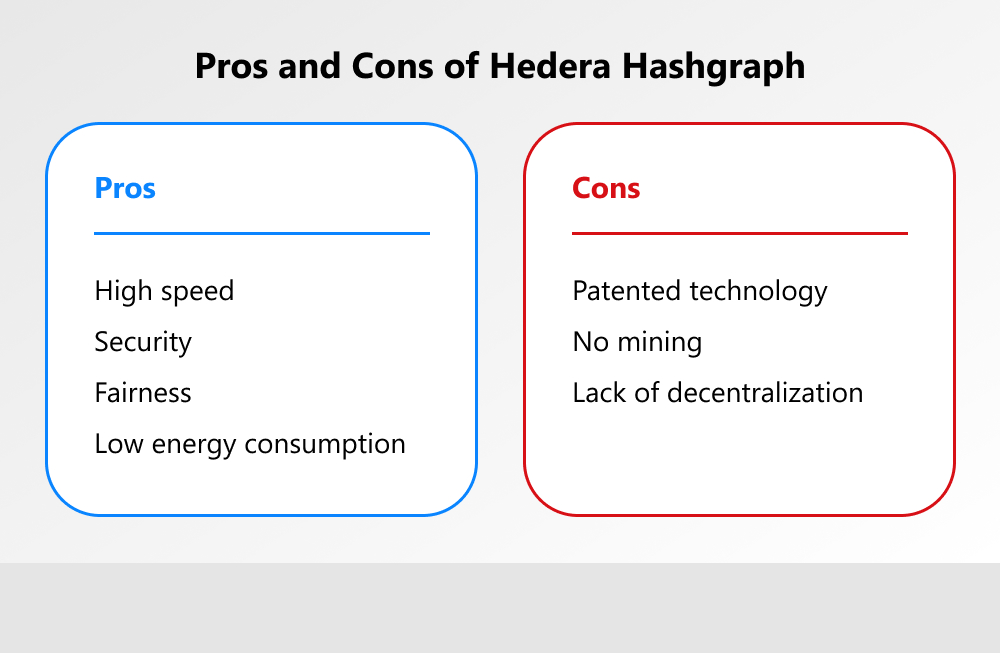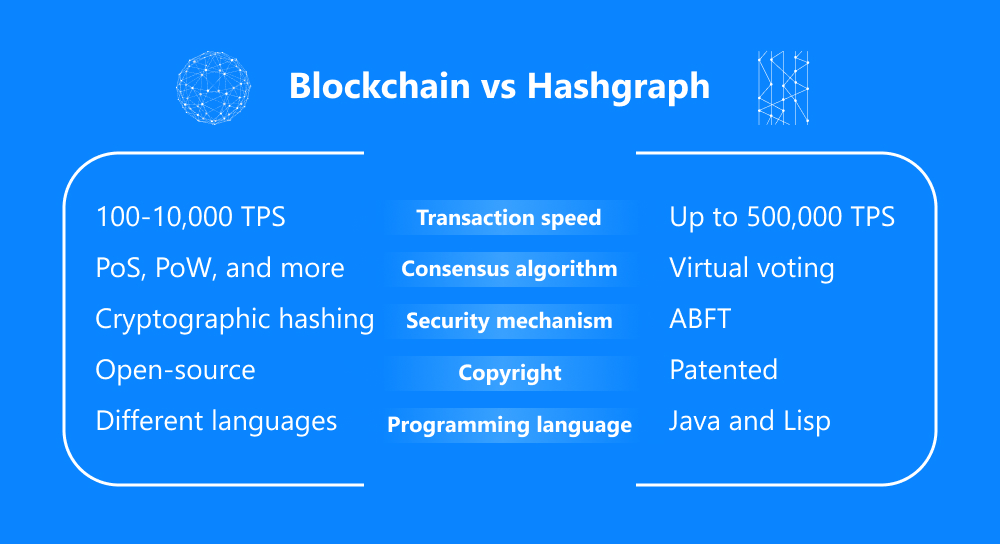Blockchain is a promising technology that was associated with Bitcoin and cryptocurrency until recently. However, PwC identified five key application areas of blockchain that include tracking cash flows, identity management, payments and financial services, contracts and dispute resolution, as well as interaction with clients. Moreover, PwC predicts that blockchain technology will drive the global economy by $1.7 trillion by 2030. But new solutions are appearing in the market. Although blockchain is quite a young technology, it has already had a competitor - Hedera Hashgraph - that is ready to drive it from the throne. Let's explore hashgraph vs blockchain in order to answer the question, who is the winner?
written by:
Andrei Kvasov
Senior Software Developer, Qulix Systems
Modern technologies continue to gradually penetrate into our lives and make them better. One of these promising solutions is blockchain, which was associated with Bitcoin and cryptocurrency until recently. However, PwC identified five key application areas of this technology that include tracking cash flows, identity management, payments and financial services, contracts and dispute resolution, as well as interaction with clients. Moreover, PwC predicts that blockchain technology will drive the global economy by $1.7 trillion by 2030. As we said above, new solutions are appearing in the market. Although blockchain is quite a young technology, it already has a competitor - Hedera Hashgraph - that is ready to drive it from the throne. Let's explore hashgraph vs blockchain in order to answer the question, who is the winner?
Contents
Hey Siri, What is Blockchain?
Blockchain is a technology of decentralized storage and distributed recording of transactions based on cryptographic methods of information security. It is also called the distributed ledger technology (DLT) because plenty of independent users store the whole chain of transactions and a current list of owners on their computers. So, users are responsible for the operations instead of various intermediaries like companies and servers. Since data is encrypted and distributed among several devices, it cannot be picked up or stolen. What's more, if any of these devices are broken, the information won't be lost. It's impossible to change or delete any records, you can only add new ones.
The concept of blockchain technology was proposed by Satoshi Nakamoto in 2008 and used for the first time in 2009 when Bitcoin disclosed itself to the world. That's why many people thought that blockchain is needed just to issue and exchange cryptocurrencies. We're here to debunk this myth and provide several examples to justify that blockchains can be successfully applied in a wide range of areas, such as copyright protection, voting, supply chain, cybersecurity, healthcare, insurance, banking, and many others.
Distributed Ledger Technology: Areas of Application
Walmart and a range of large suppliers like Dole, McCormick and Company, Tyson Foods, Driscoll's, Nestlé, Golden State Foods, McLane Company, Unilever, and Kroger have already used IBM's blockchain-based solution. It allows them to track their supply chains. Just imagine that previously it took Walmart about a week to find out from which farm the products came to the store. It takes 2.2 seconds now.
Chinese courier company SF Express is using blockchain technology to track drug shipments during the COVID-19 pandemic. They combine Big Data and distributed ledger to track, verify, and register every transaction. The solution allows the company to prioritize every order as well. Blockchain makes it possible to minimize the risk of fraud and prevent illegal products from entering the supply chain.
Blockchain solutions are widely used in the healthcare sector to gather and analyze patient data, as well as in the financial industry to make instant and cheap international transactions. The world's giant Samsung represented the Samsung Blockchain Wallet that allows users to manage their cryptocurrencies through the unified service. The key blockchain market players include IBM, AWS, Microsoft, Intel, Oracle, Huawei, Infosys, iXLedger, and many others.
How Does Blockchain Technology Work?
Let's imagine that you want to send cryptocurrency to your friend's e-wallet address. He will get access to the money received using a unique cryptographic key. A digital record, which has a certain value (in our case, it's money), is divided into complexly encrypted blocks that are connected into strict chains. Each block has information about both the previous block and the entire transaction path.
Now blocks are distributed among users who are called the seeds. The blocks are distributed in a strict mathematical sequence and are opened step by step. Therefore, third-party devices just transmit information. Only the owner of the cryptographic key can get access to the final data. It turns out that in order to make a payment, you don't need to contact an intermediary (for example, a bank or payment provider).
Information is not stored on any one server, it belongs to all participants in the blockchain network. Nobody controls the blockchain, and all transactions are controlled by the automated system. Blockchain technology doesn't allow criminals to break the system, steal sensitive data, falsify elections, forge documents, or impersonate another person. Even if fraudsters get to 99% of the blocks, one will be enough to complete the transaction and secure your data.
Hey Google, What Can You Say About Hedera Hashgraph?
Hashgraph is a distributed ledger that is built on a chain of blocks. The hashgraph uses a Directed Acyclic Graph (DAG) that records information non-linearly, without a clear block sequence. This is one of the main differences if we speak about hashgraph vs blockchain. This technology allows the hashgraph to execute more than 100,000 transactions per second, leaving behind the Ethereum blockchain with 10 TPS and Visa with over 65 TPS.
Hedera Hashgraph was developed and patented by the American mathematician Leemon Baird in 2016. The rights to the algorithm are owned by a software platform Swirlds where Mr. Baird holds the position of the co-founder and chief development officer. In October 2017, the National Credit Union Association and the Mountain West Credit Union Association forming a consortium of 6,000 banks, selected Swirlds to create a shared corporate network. The project is known as the Hedera Hashgraph Platform.
The Hedera Governing Council determines the development of the project. Board members are elected by the Swirds management. Each company has one vote, regardless of its investment. According to the charter, the Council may consist of a maximum of 39 member companies that must change every couple of years. Currently, it includes the following world's leading organizations: Boeing, BM, Deutsche Telekom, DLA Piper, Standard Bank, Swirlds, UCL, LG, Google, Wipro, and others.
How Does Hashgraph Technology Work?
The network participants, also known as the nodes, exchange data using the Gossip protocol. The transaction information is sent to two random nodes, which, in turn, transfer it to other nodes. This will continue until the number of these nodes is enough to verify the transaction. By the way, the nodes share only the transaction data rather than the network information. In contrast to the blockchain, the information is stored in hashes, which allows the hashgraph to process the transactions faster.
Since the transactions are recorded in chronological order, users can easily track their history. Simply put, the hashgraph is a record of the order of all transactions. Every node knows the entire history of transactions; thus, they use gossip and virtual voting to achieve consensus. There is no need to coordinate all the nodes with each other as each of them already knows how the other will vote. The algorithm uses Asynchronous Byzantine Fault Tolerance (ABFT) that ensures a high level of security. In simple words, it's almost impossible to hack the network and steal confidential information.
Do you have to make impressive investments to start using Hedera Hashgraph? Actually, the charges are surprisingly low and start from just $0.0001. Such a bargain compared to $15+ charges from famous blockchains, right?
Like blockchain, Hedera Haskgraph is used by the English NHS facilities to track the COVID-19 vaccine supplies on a real-time basis. The technology will help them detect any violations in the distribution of vaccines among patients by hospitals and health centers. The Australian electronic payment system Eftpos joined the Hedera Governing Council and declared the creation of a stablecoin backed by the Australian dollar in order to make fast micropayments.
Both blockchain and hashgraph can be used for payments and money transfers, storing data, launching smart contracts, and so on. They provide high security, high transaction speed, transparency, decentralized data storage, hashing, and other functions. They can be successfully applied in various fields, such as finance, healthcare, e-commerce, and others. Let's find out how blockchain differs from hashgraph?
In Brief: Hashgraph vs Blockchain
Despite the numerous advantages, the blockchain is criticized for scalability issues and low transaction speed. In most blockchain-based projects, the verification process is based on mining, an energy-intensive process that requires computers to perform complex calculations to verify transactions. Because of this, it can take from a few minutes to several hours to complete a transaction. The hashgraph doesn't require nodes to verify transactions, allowing the network to process them considerably faster. This is explained by the fact that the blockchain employs a strictly sequential chain of blocks that can't have any forks. If multiple blocks were created at the same time, the network will process only one of them, which slows down the transaction speed. The hashgraph, in turn, processes several blocks simultaneously.
Another difference between the blockchain and hashgraph is a consensus algorithm that is used to verify and approve transactions. The blockchain usually applies several consensus algorithms, the most popular of which are Proof of Work (PoW) and Proof of Stake (PoS). In PoW, all transactions are verified using difficult mathematical calculations, the validity of which can be double-checked by any user on the network. Miners solve the problem, form a new block, and confirm a transaction. But this algorithm consumes a huge amount of energy as the number of users grows.
Thus, there is one more substantial difference between blockchain and hashgraph. Hedera is much greener as it’s 885,000 times more energy efficient than Bitcoin. It seems like a substantial advantage if you care about our world.
Also, another disadvantage is that those miners who have faster and more powerful ASICs get more than the others. PoS is more energy-efficient since transactions are confirmed by validators, which are determined by the invested cryptocurrency rather than by the amount of allocated computing power. The hashgraph uses a consensus mechanism to verify transactions on its network. Consensus is achieved through gossip and virtual voting. It prevents miners from choosing which transaction they want to approve. Instead, each participant can choose the order of transactions. That's why Hedera Hashgraph is considered fairer than the blockchain.
Finally, the hashgraph is a patented technology while the blockchain is known as an open-source platform. There are private and public blockchains in the market today. Any person can join the public blockchain (e.g. Ethereum, Ripple, Waves, etc.) and create smart contracts. The public blockchain (e.g. Linux Foundation and Hyperledger Fabric) is managed by one organization and is accessible for a particular circle of people. Since the hashgraph belongs to Swirlds, some skeptics think that this technology lacks decentralization.
So, will Hedera Hashgraph be able to replace the blockchain or is it just the same, but more advanced technology? Experts have different opinions on this point. What do you think? If you want to share your opinion, don't hesitate to contact us. For more detail, please visit our website or get in touch with our support team.

Contacts
Feel free to get in touch with us! Use this contact form for an ASAP response.
Call us at +44 151 528 8015
E-mail us at request@qulix.com










